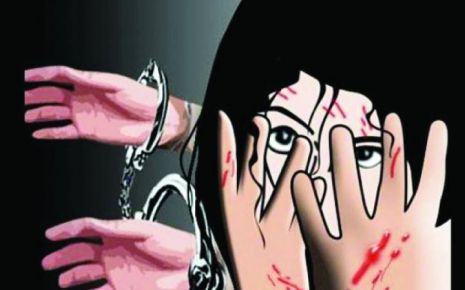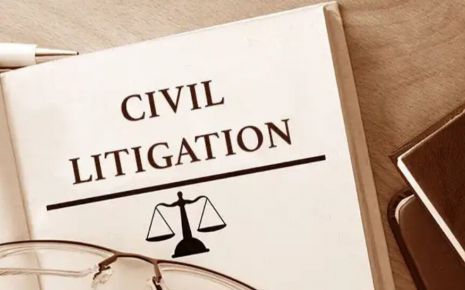Protection Against Handcuffing In India
The Supreme Court rejected the absurd practice of handcuffing accused
individuals and having them escorted from jail to observe and offer support in
the event that they are not conscious. This decision was made in the Prem
Shankar Shukla case. It has been stated unequivocally that to fasten is to
glaringly and humiliatingly punish, and that Articles 14 and 19 of the
Constitution essentially implicitly state that it is not thrilling to confine
someone's limbs once they are close; rather, it is cruel, arbitrary,
authoritarian, and uncomfortable to degrade a person by manipulating them.
According to Article 19, a detainee's minimal freedom of movement cannot be restricted by the use of handcuffs. A malevolent person can use the sovereign state to bind someone by handcuffing them or, in the event that this isn't feasible, by using Section 220 of the Indian Penal Code. That article outlines the restrictions on the licence to provide care for the role in detention, and the goal of objecting to the prisoner's term of continuous custody is to keep him from escaping.
We cannot agree to buff to foot in our crack to flow mouse. We cannot say that these offenders' flight was caused by a need for handcuffs. It is the result of the regulatory enforcement authorities' incompetence and inefficiency. I apologise. If these offenders use Feroz Khan's strategies-which are depicted in the film "Qurbani"-and flee immediately after being handcuffed?
Y.V. Chandrachud also made a statement regarding the significance of human rights as the cornerstone of any civilization, stating that "if nation not to die in country, it's de rigueur to educate ourselves into compliant that, look up for civil rights of folks is right citadel of democracy." In addition to ensuring that justice is done, the courts have an obligation to ensure that living is being served.
Therefore, the Indian handcuffing decree primarily centres on liberal jurisprudence, bureaucratic equity, and constitutional protections for citizens' dignity.
The Code of Criminal Procedure, 1973, Chapter 5, Sections 41 to 60 A, covers the provisions pertaining to arrests. The circumstances under which police may make an arrest without a warrant are covered by Section 41. Arrests resulting from refusals to assign and address are covered under Section 42. Section 43 lists circumstances in which a covert arrest canister must be completed, along with the protocol to be adhered to in such cases.
Section 44 addresses the circumstances in which an executive or reasonable magistrate may complete an arrest, regardless of when the act is committed in front of them. Section 46 emphasises the manner in which an arrest should be conducted. A police officer may type in a station under Section 47 if he intends to believe that the person who is to be detained has entered that location. Offenders may be pursued into other jurisdictions under Section 48.
However, according to Section 49 of the Cr.PC, "the individuality arrested shall not be subjected to additional arrest than is de rigueur to stop his escape. "In light of the aforementioned discussions, the summit square has time and again stated that handcuffing is expressly against Articles 14, 19, and 21 of the Indian Constitution in addition to the Cr.PC.
The court in Prem Shankar Shukla v. Delhi Administration examined the rationale behind shackles and concluded that handcuffs are initially arbitrary and prima facie inhumane. Additionally discussing the state of inmates awaiting trial, the honourable court made the following advancements:
"Stopping a subtrial from escaping is a fair and public interest action that cannot be condemned in and of itself. However, to bind a man's wrists, feet, and limbs with steel hoops, pull him through the streets, and keep him upright for hours in court is to subject him to torture, tarnish his honour, spread awareness of it, and corrupt the essence of our civil rights culture. The court noted that it is temperamental, autocratic, and demoralising to humiliate a man in this way when there is no compulsive urge to injure someone's limbs.
The court came to the conclusion that handcuffs ought to be the final resort rather than a regular diet. The court also condemned the practice of handcuffing inmates, ruling that while upper class inmates shouldn't be in handcuffs, regular citizens should. The Punjab Police Manual's paragraphs and 26.22 of Chapter XXVI were ruled to be arbitrary, and they mandated that anyone who was being held under arrest for a crime that did not qualify for bail and carried a punishment of more than three years in jail be handcuffed consistently.
The escort officer is also required by the court to obtain the handcuffs from the presiding judge and explain to them why the prisoner was placed in them. Accordingly, the court granted the court's observations in this judgement precedence over the decision of whether or not to handcuff a prisoner. The only situation in which the use of irons as an extreme measure is justified is when there is no other practical means of preventing escape under the specified conditions.
In Citizens for Democracy v. State of Assam and Ors, a bench composed of Justices Kuldip Singh and N Venkatachaliah reiterated the instructions of these two judgements and issued more stringent instructions, making the court's position on obstacles extremely clear and binding.
Journalist Kuldip Nayar's letter, which described the experience of being detained under the law for terrorist activities and sent to Guwahati in a hospital where they were on beds with many police officials securing the room, was taken into consideration by the Supreme Court in 1995.
According to the administration, the prisoners belonged to a banned group and were engaged in terrorist and disruptive activities like extortion and murder. Since both Sunil Batra and Prem Shukla had firsthand knowledge of the dire circumstances under which police and jail staff may resort to handcuffing inmates both inside and outside of the prison, the court spoke extensively about their situations. However, the court was forced to issue additional instructions, noting that the directives were "treated as a pious statement" and that they were not being followed. We observe that handcuffs and similar measures are still used by police and jail officials without hesitation and without any kind of reasoning.
As a result, it is now essential to provide instructions and follow them carefully. Because of this, the nation's highest court has firmly opposed the use of fetters to shackle prisoners. It considers it a dehumanising practice that ought to be left to the police's discretion and should only be utilised as a last option with the magistrate's approval.
"Any trial in which a person is accused of a non-bailable offence punished with more than 3 years' prison term must be handcuffed is a violation of Articles 14, 19, and 21," the supreme court ruled in Siddharam Satlingappa Mhetre v. State of Maharashtra. The nature of the accusations is not the criterion. The type of accusations is not the criterion. The decisive factor is the obvious and present risk of escaping police custody.
After considering the arguments raised above, it is clear that handcuffs and fetters are not only tools used to apprehend criminals but also a cruel and barbaric practice that violates every aspect of human dignity.
Conclusion
Despite the protections provided by the 1973 Code of Criminal Methodology, police use of force continues to be mishandled. Even now, it is acknowledged that the police deal with people and get money from them by using professionals. There have been rumours that the police mistreated the people they arrested in relation to the accusations made against them and failed to provide them with appropriate defences for their treatment. Therefore, it is essential to modify Criminal Worth Affiliation so that the State understands that its primary duty is to apprehend and transform the offender rather than merely displacing him. All of the methods work together harmoniously and legitimately, enabling some aspects of the State's apparatus.
It is the police's disregard for any other duty to protect everyone and their interests in the public view, which also links the acquired individuals. As a result, it is the duty of the police to fairly receive the advantages of the criticism and guarantee that they are being properly monitored in accordance with the legal framework and not exaggerated. In the unlikely event that the person is ready for release on bond and transferred under the careful supervision of a designated authority within a day, the police should make sure that the person is informed about his or her rights, including grounds of catch.
Written By: Akanksha
According to Article 19, a detainee's minimal freedom of movement cannot be restricted by the use of handcuffs. A malevolent person can use the sovereign state to bind someone by handcuffing them or, in the event that this isn't feasible, by using Section 220 of the Indian Penal Code. That article outlines the restrictions on the licence to provide care for the role in detention, and the goal of objecting to the prisoner's term of continuous custody is to keep him from escaping.
Legal Provisions Related To Handcuffing
The Indian law pertaining to arrests has a significant impact on the use of handcuffs. Chains and restraints are described as "Instruments for securing the hands or feet of prisoners under arrest, or as a course of punishment" by the fact list Britannica. For the second time in a row, it has been in the centre of the storm, causing severe offenders to routinely escape from detention. When the law confronts the criminal's attempt to escape their captivity, no sane person would applaud the canister. The argument for handcuffing asks to be examined in light of shared interests and environmental constitutional rights.We cannot agree to buff to foot in our crack to flow mouse. We cannot say that these offenders' flight was caused by a need for handcuffs. It is the result of the regulatory enforcement authorities' incompetence and inefficiency. I apologise. If these offenders use Feroz Khan's strategies-which are depicted in the film "Qurbani"-and flee immediately after being handcuffed?
Y.V. Chandrachud also made a statement regarding the significance of human rights as the cornerstone of any civilization, stating that "if nation not to die in country, it's de rigueur to educate ourselves into compliant that, look up for civil rights of folks is right citadel of democracy." In addition to ensuring that justice is done, the courts have an obligation to ensure that living is being served.
Therefore, the Indian handcuffing decree primarily centres on liberal jurisprudence, bureaucratic equity, and constitutional protections for citizens' dignity.
The Code of Criminal Procedure, 1973, Chapter 5, Sections 41 to 60 A, covers the provisions pertaining to arrests. The circumstances under which police may make an arrest without a warrant are covered by Section 41. Arrests resulting from refusals to assign and address are covered under Section 42. Section 43 lists circumstances in which a covert arrest canister must be completed, along with the protocol to be adhered to in such cases.
Section 44 addresses the circumstances in which an executive or reasonable magistrate may complete an arrest, regardless of when the act is committed in front of them. Section 46 emphasises the manner in which an arrest should be conducted. A police officer may type in a station under Section 47 if he intends to believe that the person who is to be detained has entered that location. Offenders may be pursued into other jurisdictions under Section 48.
However, according to Section 49 of the Cr.PC, "the individuality arrested shall not be subjected to additional arrest than is de rigueur to stop his escape. "In light of the aforementioned discussions, the summit square has time and again stated that handcuffing is expressly against Articles 14, 19, and 21 of the Indian Constitution in addition to the Cr.PC.
Jurisprudence On The Cases Of Handcuffing
The Supreme Court ruled in Sunil Batra v. Delhi Administration that Article 21 forbids interference with an individual's freedom other than in accordance with the legal framework and that interference with an individual's freedom to the extent that it contradicts the law would and come out and send them irons on detainees is illegal and should be arrested immediately, except in a small category of cases," the court ruled, holding that even a person in judicial custody is entitled to a fundamental possibility for development under Article 19 of the Constitution, and that this right cannot be cruelly curtailed by the use of binds or other bands.The court in Prem Shankar Shukla v. Delhi Administration examined the rationale behind shackles and concluded that handcuffs are initially arbitrary and prima facie inhumane. Additionally discussing the state of inmates awaiting trial, the honourable court made the following advancements:
"Stopping a subtrial from escaping is a fair and public interest action that cannot be condemned in and of itself. However, to bind a man's wrists, feet, and limbs with steel hoops, pull him through the streets, and keep him upright for hours in court is to subject him to torture, tarnish his honour, spread awareness of it, and corrupt the essence of our civil rights culture. The court noted that it is temperamental, autocratic, and demoralising to humiliate a man in this way when there is no compulsive urge to injure someone's limbs.
The court came to the conclusion that handcuffs ought to be the final resort rather than a regular diet. The court also condemned the practice of handcuffing inmates, ruling that while upper class inmates shouldn't be in handcuffs, regular citizens should. The Punjab Police Manual's paragraphs and 26.22 of Chapter XXVI were ruled to be arbitrary, and they mandated that anyone who was being held under arrest for a crime that did not qualify for bail and carried a punishment of more than three years in jail be handcuffed consistently.
The escort officer is also required by the court to obtain the handcuffs from the presiding judge and explain to them why the prisoner was placed in them. Accordingly, the court granted the court's observations in this judgement precedence over the decision of whether or not to handcuff a prisoner. The only situation in which the use of irons as an extreme measure is justified is when there is no other practical means of preventing escape under the specified conditions.
In Citizens for Democracy v. State of Assam and Ors, a bench composed of Justices Kuldip Singh and N Venkatachaliah reiterated the instructions of these two judgements and issued more stringent instructions, making the court's position on obstacles extremely clear and binding.
Journalist Kuldip Nayar's letter, which described the experience of being detained under the law for terrorist activities and sent to Guwahati in a hospital where they were on beds with many police officials securing the room, was taken into consideration by the Supreme Court in 1995.
According to the administration, the prisoners belonged to a banned group and were engaged in terrorist and disruptive activities like extortion and murder. Since both Sunil Batra and Prem Shukla had firsthand knowledge of the dire circumstances under which police and jail staff may resort to handcuffing inmates both inside and outside of the prison, the court spoke extensively about their situations. However, the court was forced to issue additional instructions, noting that the directives were "treated as a pious statement" and that they were not being followed. We observe that handcuffs and similar measures are still used by police and jail officials without hesitation and without any kind of reasoning.
As a result, it is now essential to provide instructions and follow them carefully. Because of this, the nation's highest court has firmly opposed the use of fetters to shackle prisoners. It considers it a dehumanising practice that ought to be left to the police's discretion and should only be utilised as a last option with the magistrate's approval.
"Any trial in which a person is accused of a non-bailable offence punished with more than 3 years' prison term must be handcuffed is a violation of Articles 14, 19, and 21," the supreme court ruled in Siddharam Satlingappa Mhetre v. State of Maharashtra. The nature of the accusations is not the criterion. The type of accusations is not the criterion. The decisive factor is the obvious and present risk of escaping police custody.
After considering the arguments raised above, it is clear that handcuffs and fetters are not only tools used to apprehend criminals but also a cruel and barbaric practice that violates every aspect of human dignity.
Conclusion
Despite the protections provided by the 1973 Code of Criminal Methodology, police use of force continues to be mishandled. Even now, it is acknowledged that the police deal with people and get money from them by using professionals. There have been rumours that the police mistreated the people they arrested in relation to the accusations made against them and failed to provide them with appropriate defences for their treatment. Therefore, it is essential to modify Criminal Worth Affiliation so that the State understands that its primary duty is to apprehend and transform the offender rather than merely displacing him. All of the methods work together harmoniously and legitimately, enabling some aspects of the State's apparatus.
It is the police's disregard for any other duty to protect everyone and their interests in the public view, which also links the acquired individuals. As a result, it is the duty of the police to fairly receive the advantages of the criticism and guarantee that they are being properly monitored in accordance with the legal framework and not exaggerated. In the unlikely event that the person is ready for release on bond and transferred under the careful supervision of a designated authority within a day, the police should make sure that the person is informed about his or her rights, including grounds of catch.
Written By: Akanksha
Law Article in India
Legal Question & Answers
Lawyers in India - Search By City
LawArticles
How To File For Mutual Divorce In Delhi

How To File For Mutual Divorce In Delhi Mutual Consent Divorce is the Simplest Way to Obtain a D...
Increased Age For Girls Marriage

It is hoped that the Prohibition of Child Marriage (Amendment) Bill, 2021, which intends to inc...
Facade of Social Media

One may very easily get absorbed in the lives of others as one scrolls through a Facebook news ...
Section 482 CrPc - Quashing Of FIR: Guid...

The Inherent power under Section 482 in The Code Of Criminal Procedure, 1973 (37th Chapter of t...
The Uniform Civil Code (UCC) in India: A...

The Uniform Civil Code (UCC) is a concept that proposes the unification of personal laws across...
Role Of Artificial Intelligence In Legal...

Artificial intelligence (AI) is revolutionizing various sectors of the economy, and the legal i...








Please Drop Your Comments